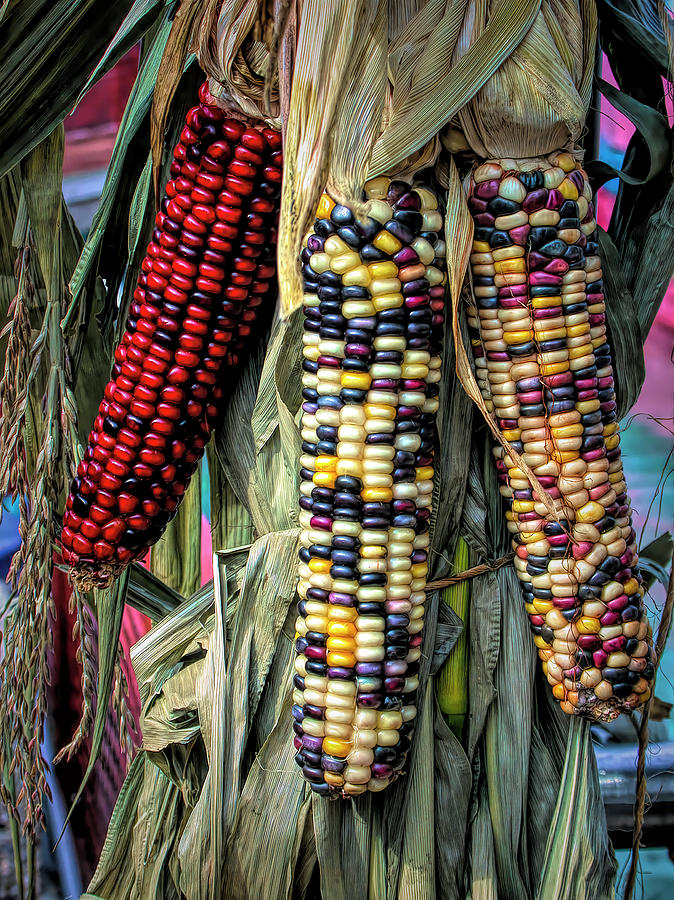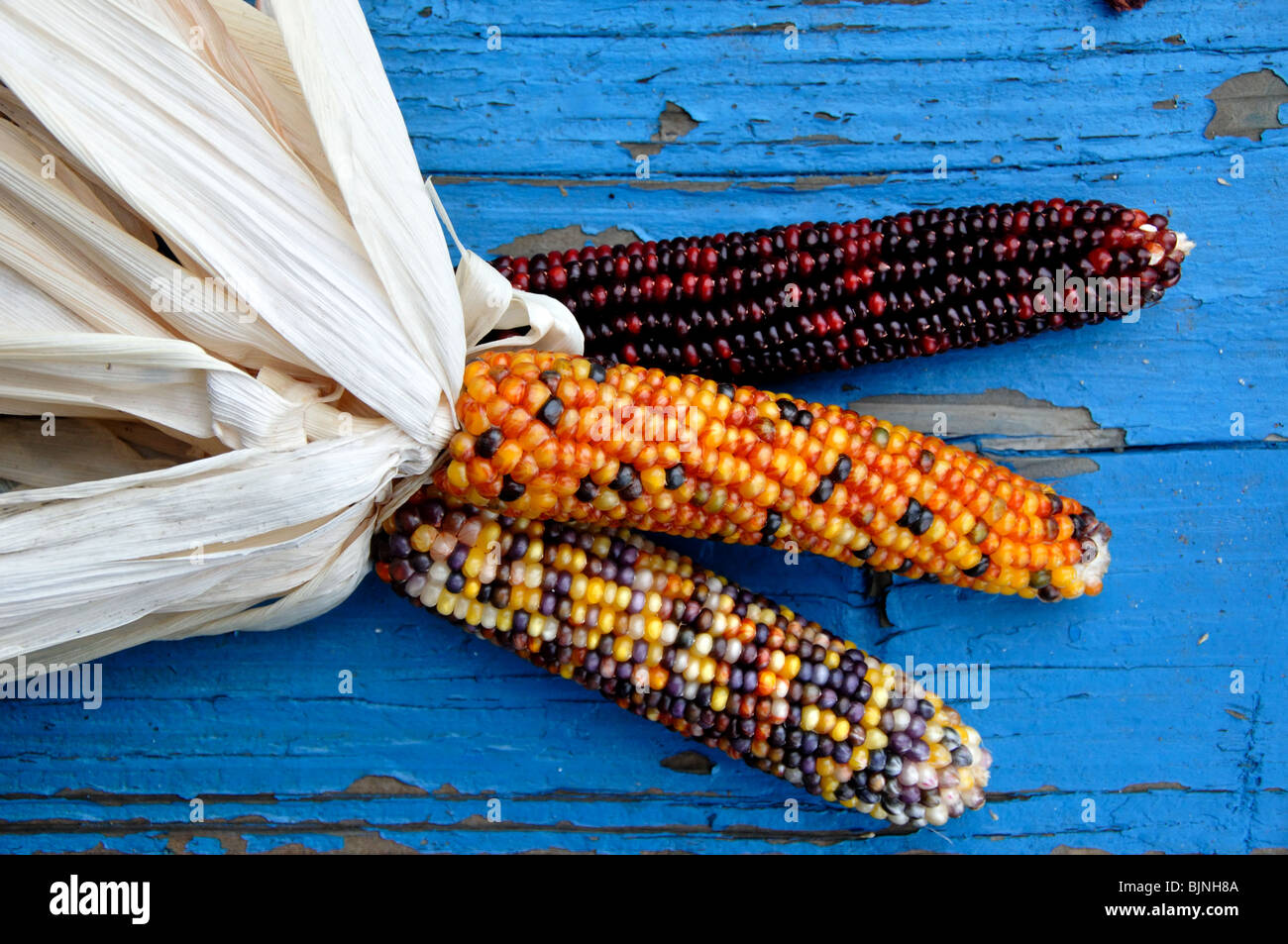

You will be able to enjoy your home grown Indian corn for the rest of the fall and winter seasons. To properly harvest the corn, wait until the husks have no more green. The Indian corn also requires frequent watering. In the mean time, you will need to thin the seedlings and keep the soil rich by applying clippings or mulch around the plants.
Indian corn full#
It will take about 3 months or more for the Indian corn to reach its full maturity.

Otherwise, expect to see some beautiful and unique speckling of the corn. If you want to keep solid colors, be sure to plant the colors away from each other. The point is to plant densely to allow for pollination to occur naturally with the wind. Your rows should be approximately four feet long and 24 to 26 inches apart. Every year, Ho-Chunk Farms harvests Indian Corn on the Winnebago Tribe of Nebraska using traditional methods. It can be used to make hominy, polenta, cornmeal, soups, and much more.

Plant the seeds at a depth of approximately ¾ inch and 4 to 5 inches apart. INDIAN CORN is a 10 letter phrase starting with I and ending with N Crossword clues for INDIAN CORN Clue Answer Indian corn (5) MAIZE: American corn (5) Cereal crop (5) Mayan food staple (5) Color of ripe corn (5) Mesoamerican crop (5) Popcorn, e.g. Indian Corn, or Flint corn, is one of the oldest types of corn and comes in a variety of colors. The huge ears are about 12 inches long and very thick and heavy This beauty comes in a whole range of. When the time is right, plant the Indian corn in rich soil that good drainage conditions. This is the best Indian flint corn we have found. Gather all other necessary gardening equipment that you enjoy using or are accustomed to using. Simply choose the largest kernels from the cob and place them in a sealed plastic bag store them in a cool and dry indoor location until you are ready to use them. You can also use Indian corn that you may have already purchased from the local farmer’s market or garden store. You can do it online or from various seed catalogs. The first thing you will need to do when attempting to grow your own Indian corn is to purchase your seeds. You do want to keep the Indian corn separate from any sweet corn you are attempting to grow to avoid cross pollination. Keep in mind that Indian corn does best in full sun. You can accomplish this in a raised garden bed as well. Ideally, you will need a space large enough to hold four rows, each 4 feet long and 25 inches apart. Once you are ready to plant your Indian corn you will need a plot of land for it to grow into healthy stalks. Water deeply and wait for the soil to completely dry out before watering again.The right season for planting Indian corn is early in the spring time when the temperature is sure to stay at 60 degrees or more. Pick containers with drainage holes and use well-draining cactus and succulent soil with 50% to 75% mineral grit such as coarse sand, pumice, or perlite. They need bright sunlight, great drainage, and infrequent water to prevent rot.

Use gloves and eye protection to handle.Įuphorbia will not survive a hard frost, but if there is a risk of freezing temperatures they can be brought indoors to grow on a sunny window sill or under a grow light.
Indian corn skin#
PLEASE NOTE: Euphorbia contain a white, latex sap that can cause skin irritation or allergic reaction. This plant is fully rooted in a 2.0" square, plastic pot. mammillaris can reach 12.0" tall and sprout new branches from its base. Water up to once a week in the summer and up to once a month in the winter, allowing the soil to fully dry out between waterings. They are extremely drought tolerant and need great drainage. "Corn cob" euphorbias are lined with raised tubercles that shrink in the dry season and swell when rehydrated. Instead these kernels are ground into flour, cornmeal. But before you get ready to cook up this decorative corn be aware the starchy kernels are not sweet like the corn on the cob we are used to eating. It was also grown and used for centuries in China, India and South America. variegata): A columnar, cactus-like plant studded with occasional spikes that resemble toothpicks. Indian corn was a food source not decoration for Native Americans. Indian Corn Cob ( Euphorbia mammiliaris f.


 0 kommentar(er)
0 kommentar(er)
